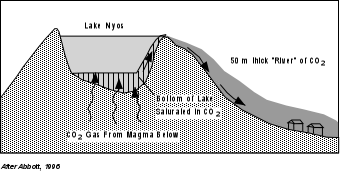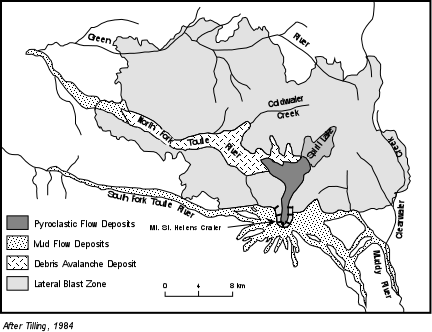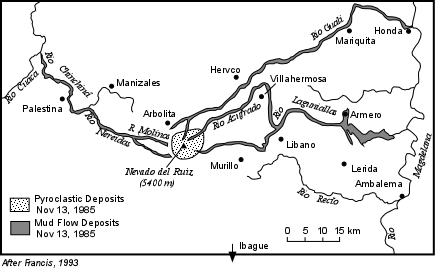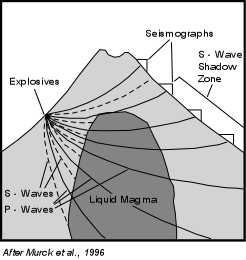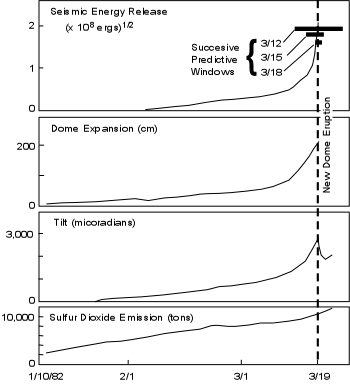Poisonous Gas Emissions
Volcanoes emit gases that are often poisonous to living organisms. Among these poisonous gases are: Hydrogen Chloride (HCl), Hydrogen Sulfide (H2S), Hydrogen Fluoride (HF), and Carbon Dioxide (CO2).
-
The Chlorine, Sulfur. and Fluorine gases can kill organisms by direct ingestion, or by absorption onto plants followed by ingestion by organisms.
In 1984, CO2 gas escaping from the bottom of Lake Monoun, a crater lake in the African country of Cameroon, killed 37 people.
In 1986 an even larger CO2 gas emission from Lake Nyos in Cameroon killed more than 1700 people and 3000 cattle.
